Removal Procedure
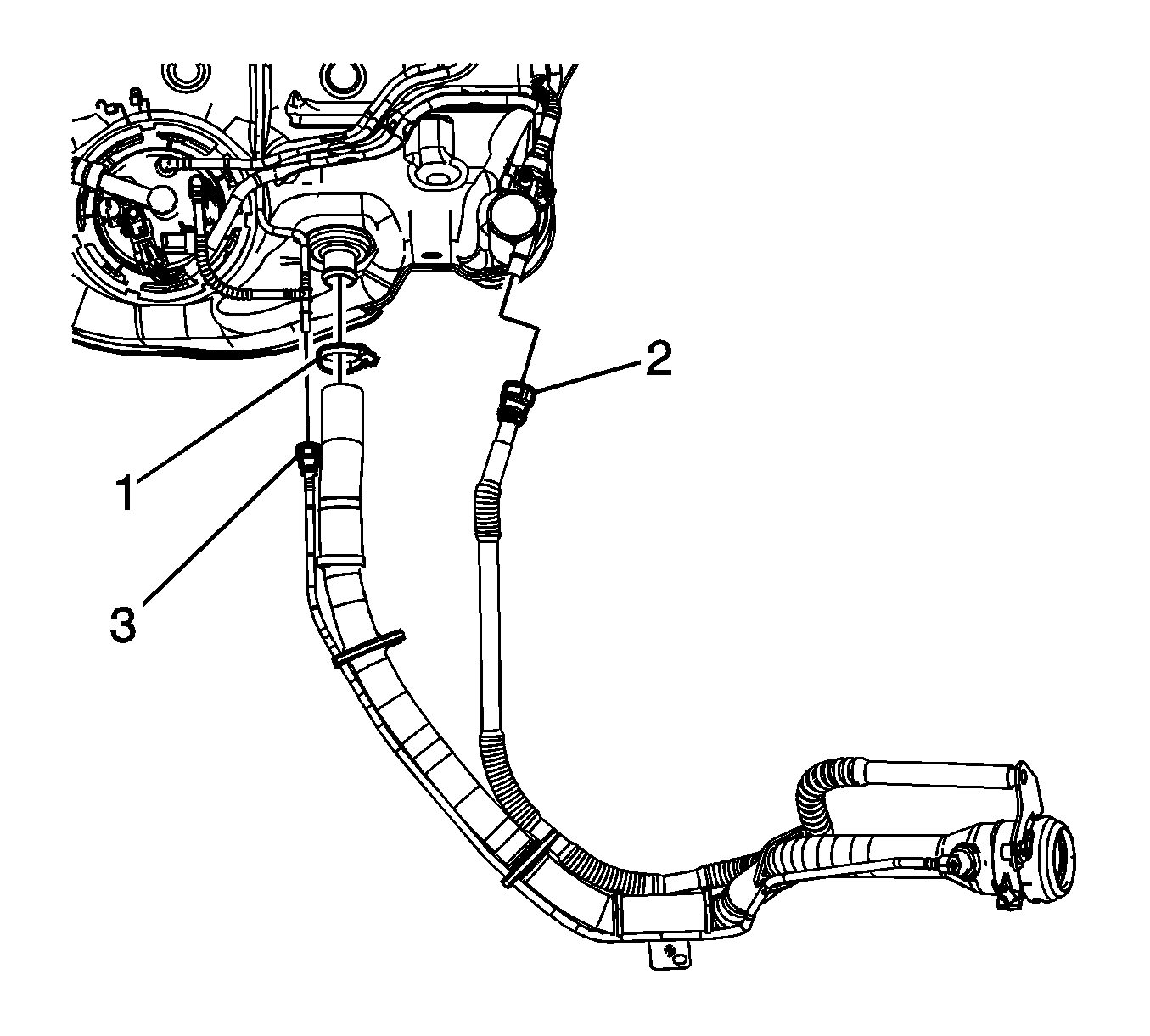
- Relieve the fuel system pressure. Refer to
Fuel Pressure Relief.
- Drain the fuel tank. Refer to
Fuel Tank Draining.
- Raise and support the vehicle. Refer to
Lifting and Jacking the Vehicle.
- Loosen the fuel fill pipe hose clamp (1) at the fuel tank.
- Disconnect the evaporative emission (EVAP) canister vent solenoid tube quick connect fitting (2). Refer to
Plastic Collar Quick Connect Fitting Service.
- Disconnect the vapor recirculation line quick connect fitting (3). Refer to
Plastic Collar Quick Connect Fitting Service.
- Disconnect the fuel fill pipe hose from the fuel tank.
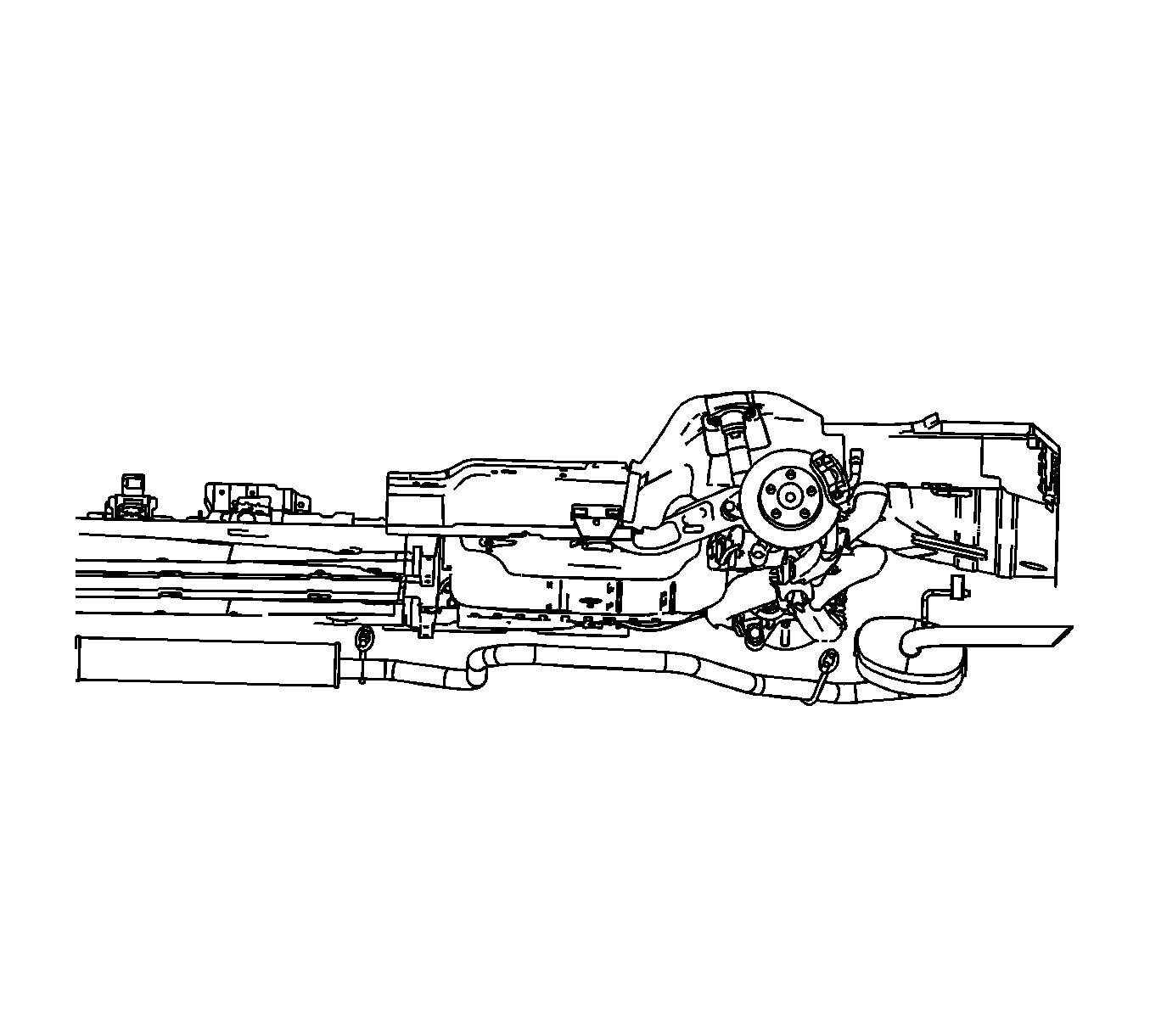
- Release the exhaust pipe insulators from the underbody hangers.
- Release the muffler insulator from the underbody hanger and slowly lower the exhaust to rest on a tall jackstand. If this is not possible, remove the rear half of the exhaust system at the take down flange.
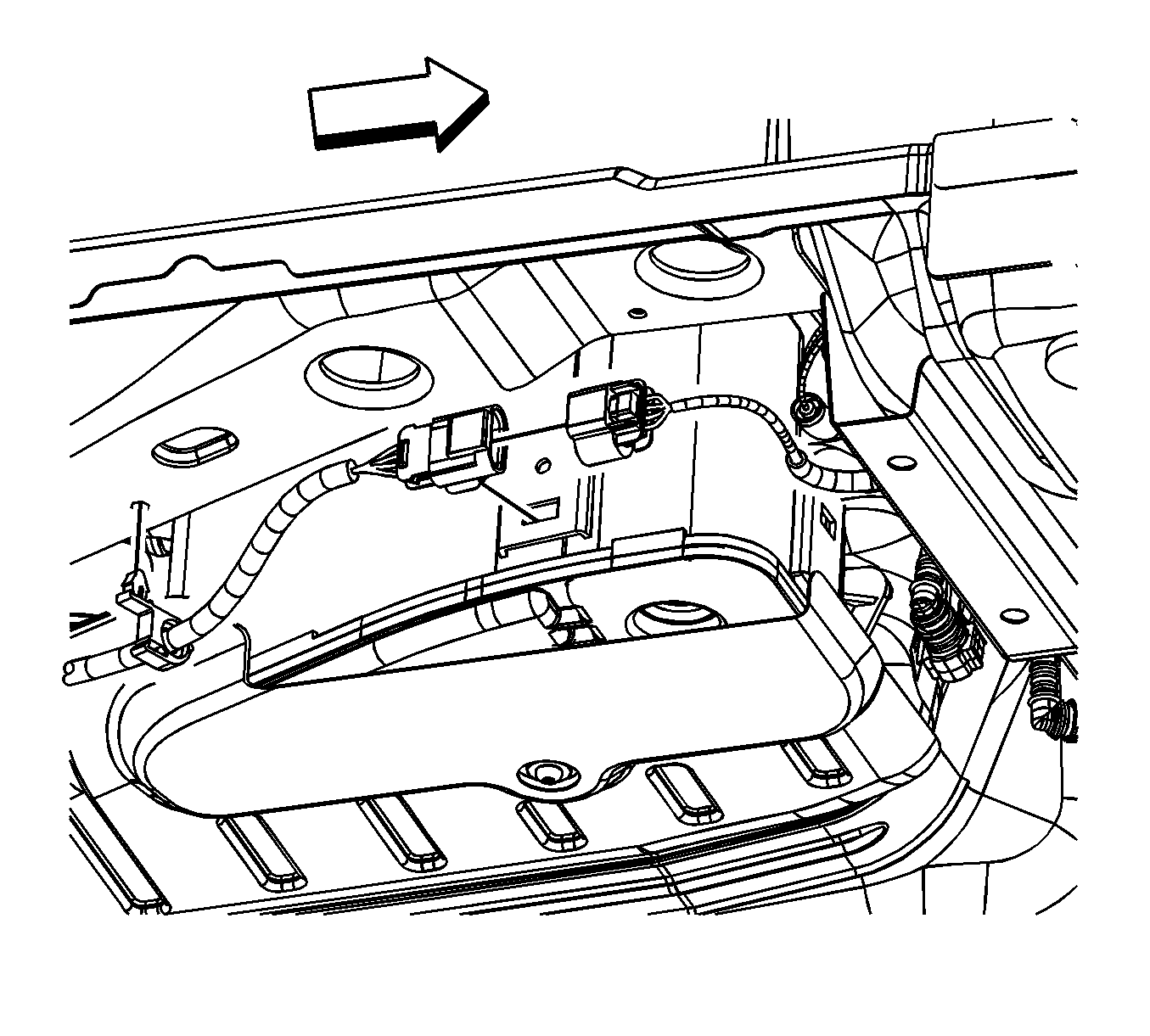
- If applicable, disengage the rear antilock brake system (ABS) wiring harness connector clip from the side
of the EVAP canister bracket.
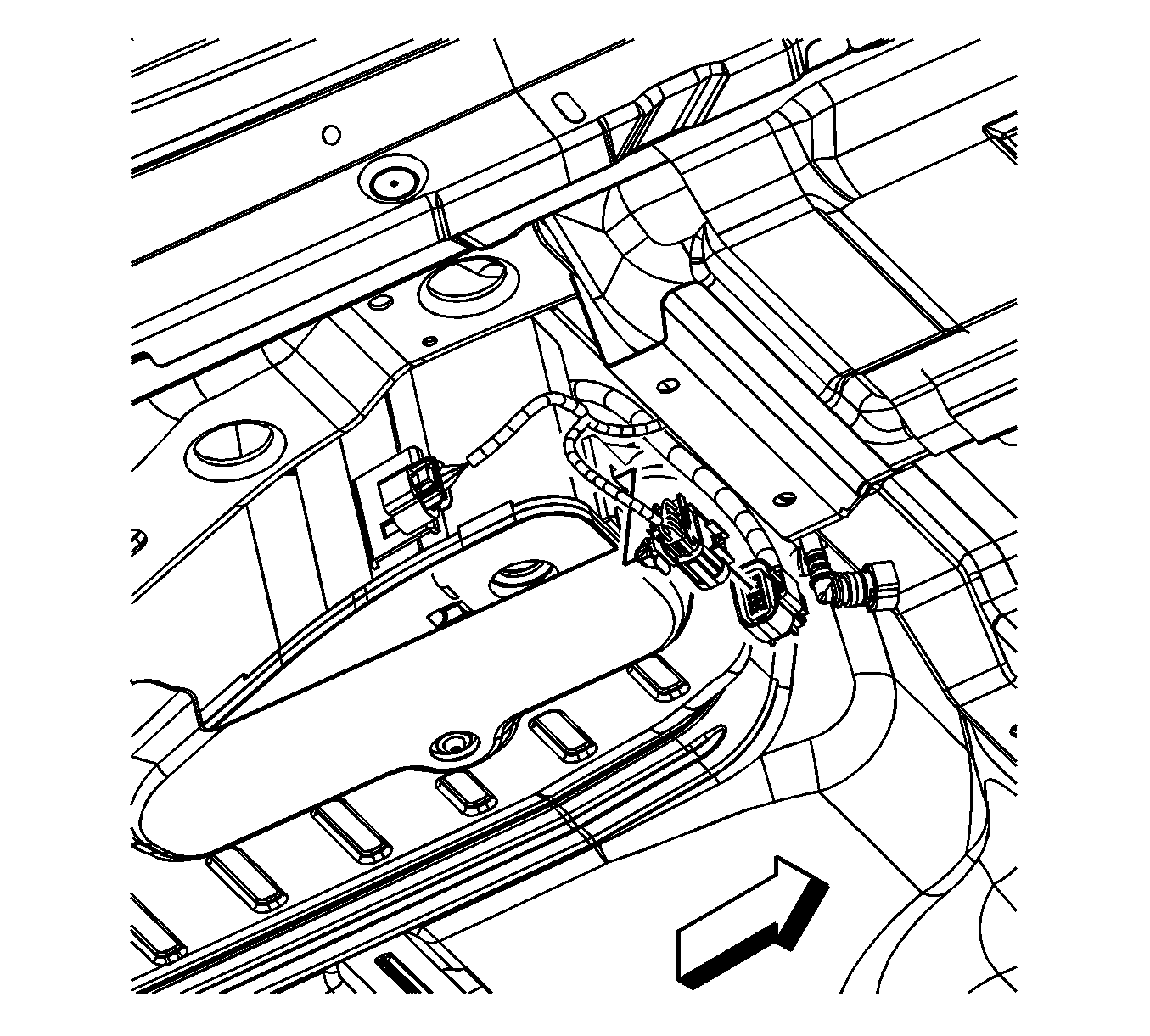
- Disconnect the fuel tank jumper electrical connector from the underbody wiring harness.
- Disengage the underbody wiring harness connector clip from the EVAP canister bracket.
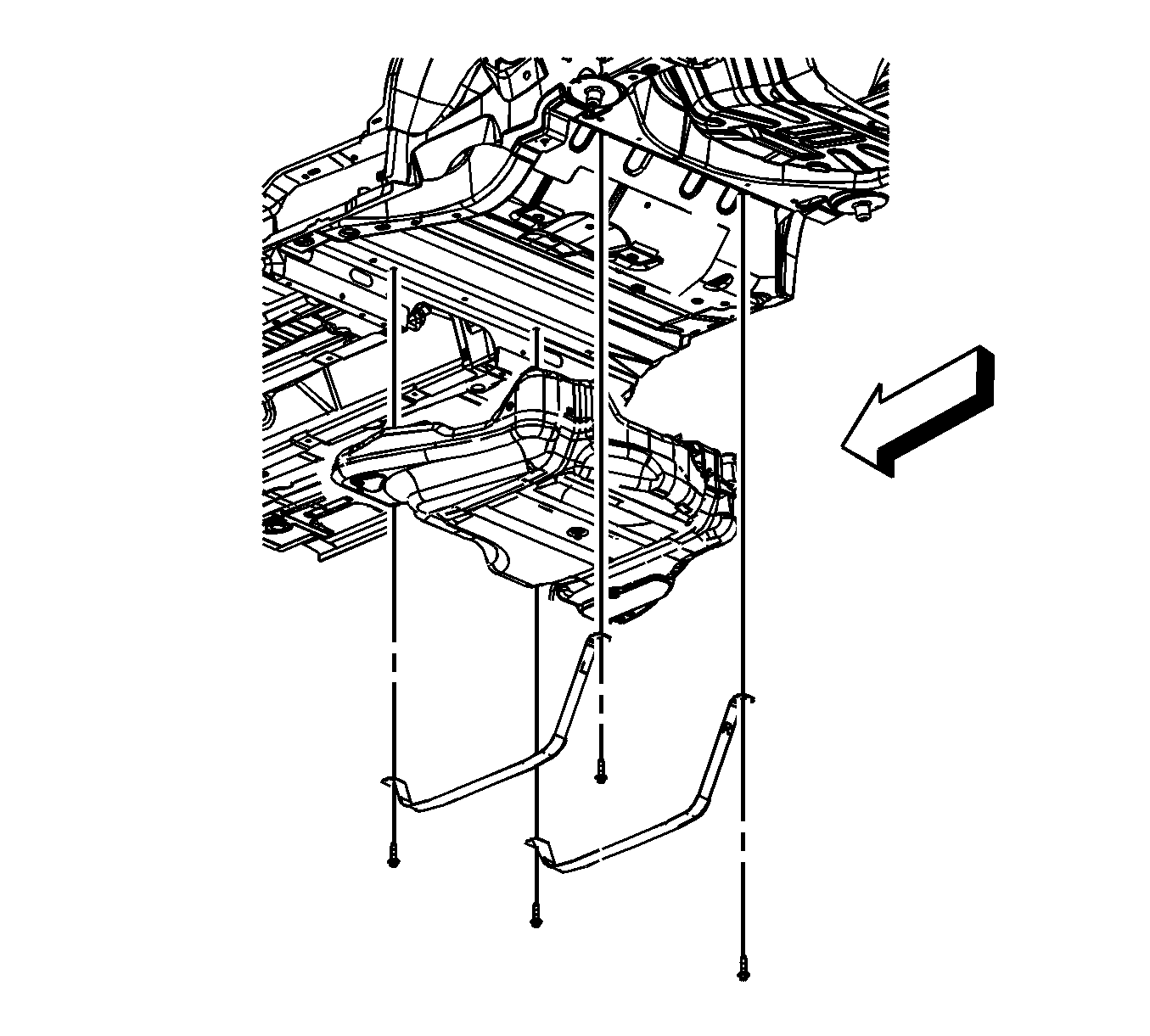
- Use an appropriate adjustable jack to support the fuel tank during removal.
- Remove the fuel tank strap bolts.
- Remove the fuel tank straps.
- Using the adjustable jack, lower the fuel tank slightly in order to access the fuel line connections.

- Disconnect the fuel feed (2) and vapor (1) line quick connect fittings. Refer to
Plastic Collar Quick Connect Fitting Service.
- Cap or plug the fuel feed and vapor lines in order to prevent fuel loss and/or system contamination.
- In order to clear the exhaust pipe, slowly lower the right side of the fuel tank.
- Once the tank is clear of the right frame rail, remove the fuel tank down and forward toward the right side of the vehicle.
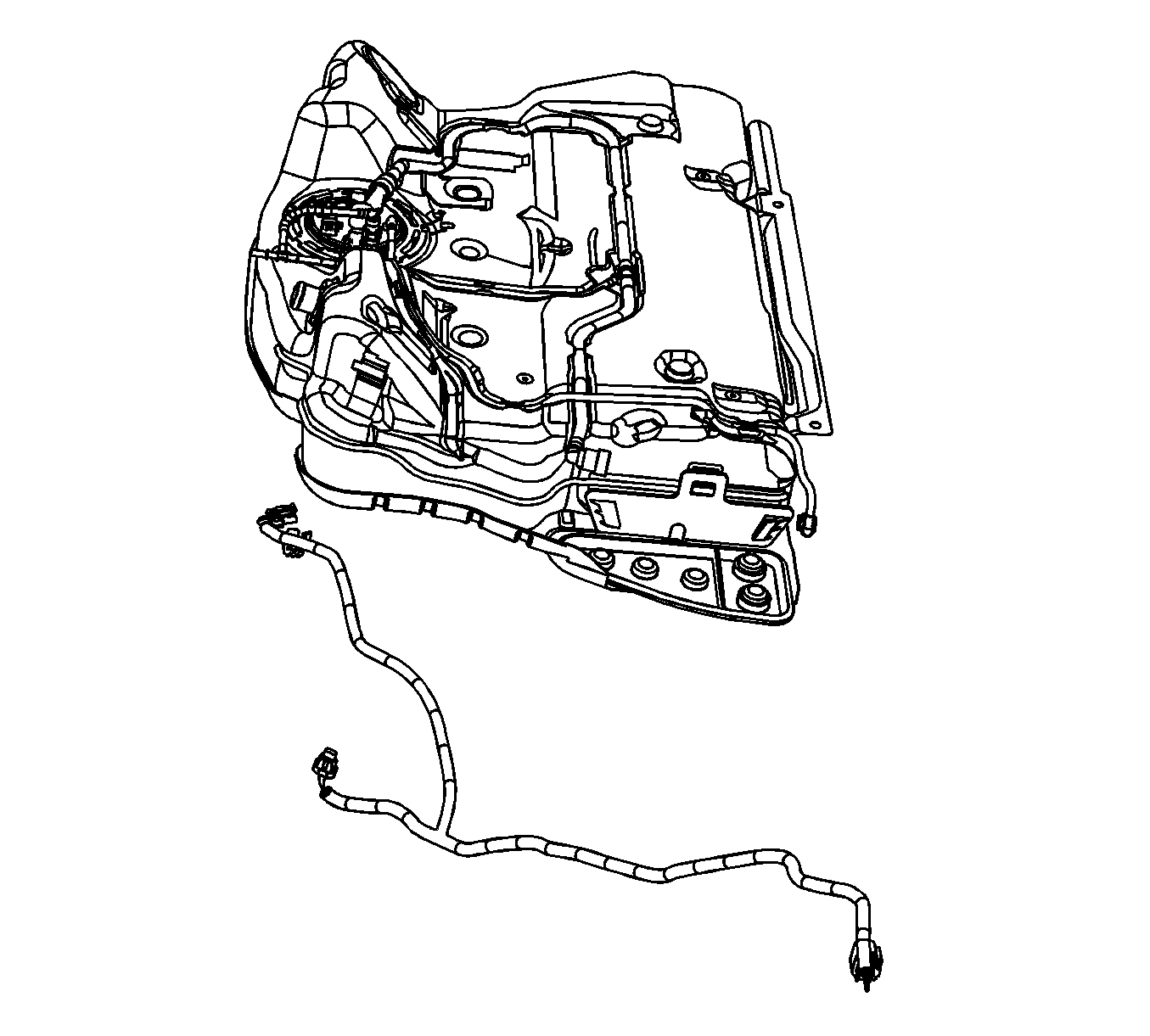
- If the fuel tank is being replaced, disconnect and remove the fuel tank electrical harness.
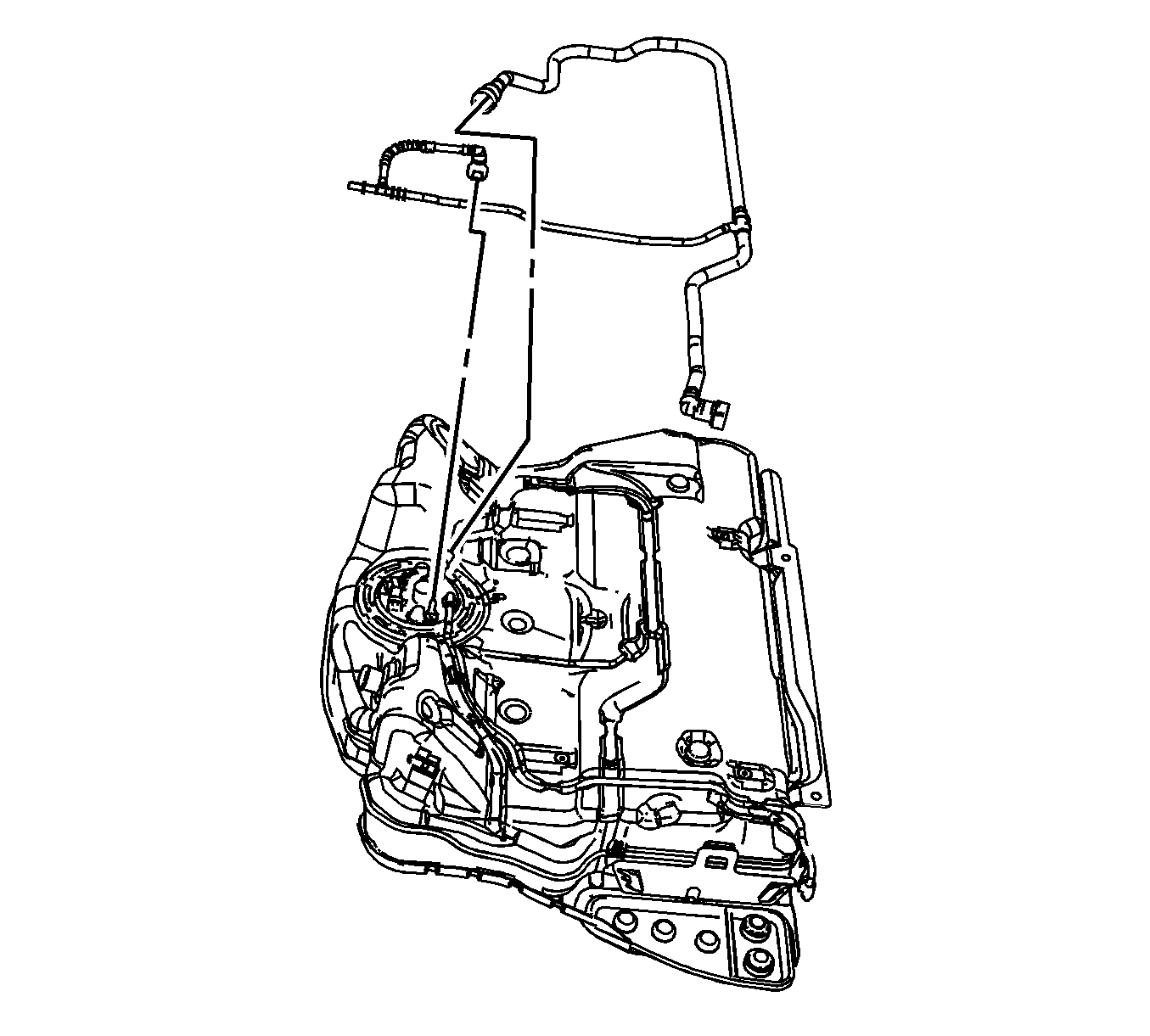
- If the fuel tank is being replaced, perform the following:
Installation Procedure

- If the fuel tank is being replaced, perform the following:

- If the fuel tank is being replaced, install and connect the fuel tank electrical harness.

- Begin to install the left side of the fuel tank over the exhaust pipe.
- Raise the right side of the fuel tank into position inboard of the right frame rail. Use care in feeding the fuel feed, EVAP vapor line, and the fuel sender electrical harness over the exhaust system.
- Remove the caps or plugs from the fuel feed and vapor lines.
- Connect the fuel feed (2) and vapor (1) line quick connect fittings. Refer to
Plastic Collar Quick Connect Fitting Service.

- Completely raise and install the fuel tank into position.
Notice: Refer to Fastener Notice in the Preface section.
Important: Ensure that the strap marked with the "L" is installed on the left side and the strap marked "R" is installed on the right side.
- Install the fuel tank straps.
- Install the fuel tank strap bolts.
Tighten
Tighten the bolts to 20 N·m (15 lb ft).
- Remove the adjustable jack from under the fuel tank.

- Connect the fuel tank jumper electrical connector to the underbody wiring harness.
- Engage the underbody wiring harness connector clip to the EVAP canister bracket.

- If applicable, engage the rear ABS wiring harness connector clip to the side of the EVAP canister bracket.

- Raise the exhaust into position and install the muffler insulator to the underbody hanger.
- Install the exhaust extension pipe insulators to the underbody hangers.

- Connect the fuel fill pipe hose to the fuel tank.
- Tighten the fuel fill pipe hose clamp (1) at the fuel tank.
Tighten
Tighten the clamp to 4 N·m (35 lb in).
- Connect the EVAP canister vent solenoid tube quick connect fitting (2). Refer to
Plastic Collar Quick Connect Fitting Service.
- Connect the vapor recirculation line quick connect fitting (3). Refer to
Plastic Collar Quick Connect Fitting Service.
- Lower the vehicle.
- Refill the fuel tank.
- Connect the negative battery cable. Refer to
Battery Negative Cable Disconnection and Connection.
- Inspect for fuel leaks using the following procedure:
| 23.1. | Turn ON the ignition, with the engine OFF for 2 seconds. |
| 23.2. | Turn OFF the ignition for 10 seconds. |
| 23.3. | Turn ON the ignition, with the engine OFF. |
| 23.4. | Inspect for fuel leaks. |
















